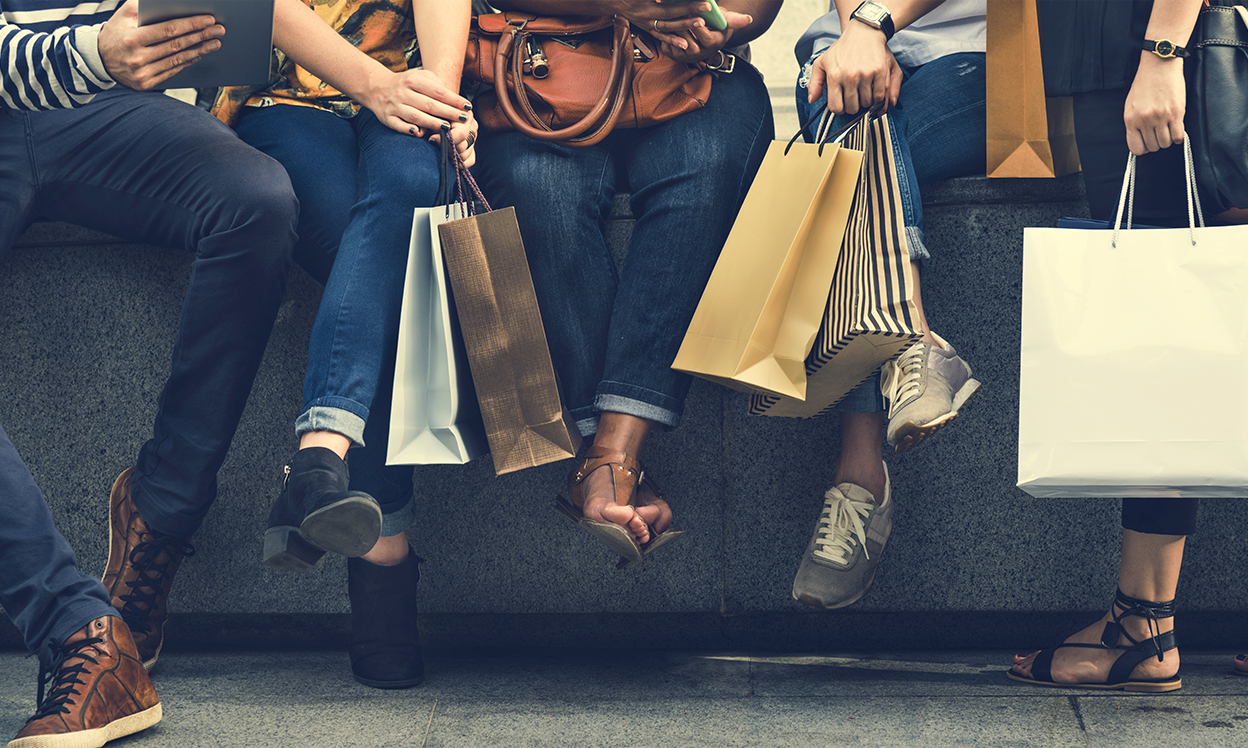
There’s been a lot of back and forth on brand loyalty lately. Some say it’s past its prime, that consumers have abandoned brands in favour of convenience. Others advocate that connection with consumers is still a worthy goal, and creative brands can give shoppers a reason to come back for more.
If you want to provoke a powerful reaction in a room (or a Zoom) full of advertisers and marketers, simply state that brand loyalty is dead. To some, this is a myth that must be debunked. They believe it will always be possible to build reliable, long-term consumer relationships. Others maintain that the concept of brand loyalty is long past its prime, and that the pandemic only hastened its demise.
Is there a right answer? On one hand, the pandemic shook brand loyalty to its foundations, pushing shoppers to prioritize factors like delivery and curbside pickup over brand selection. On the other hand, people seek a sense of stability in times of uncertainty, and this could have caused shoppers to double down on what they know and trust. Now that shoppers are returning to stores with cautious optimism, brands are trying to win over their customers’ hearts in new ways—even if that means competing on price point and convenience.
Over the last several decades, people’s views on work, life, relationships, corporations, and consumerism have changed significantly, with powerful implications for how and why they value brands.
Researchers have reported in recent years on a massive erosion of consumer loyalty that can be attributed to technology as well as cultural and attitudinal shifts1 that increased the value of “new” versus “known.” A whopping 73% of consumers are willing to consider a new brand,2 and the pandemic saw less than half of customers purchasing the same brands they always do.3 One out of every three Canadians4 purchased from a new brand in the last month.
Realistically, loyalty isn’t the key factor driving a purchase—price, quality, and reliability are, particularly in the ever-expanding ecommerce marketplace. Comparing 2019/2020 to 2020/2021, Google notes a 200% YoY increase5 in “low budget” searches, while 42% of Canadian consumers found prices higher than normal during that same timeframe.6 Only 23% of consumers7 say they have a relationship with a brand, and studies show that 75% of Americans8 changed to new brands during the pandemic.
Yet consumer spending is still going strong, and most spend categories saw a 10% growth9 in online customers during the pandemic. Brands are finding fresh ways to think strategically and further diversify their channels and marketing mix to ensure that consumers can conveniently access their products.
Today, there’s more information and choice thanks to online shopping innovations. The options are less expensive, more convenient, available to anyone, anywhere, anytime. Plus, customers are staying informed—consumers spend an average of 63 days10 gathering info before a big purchase, and loyalty has less to do with their decisions than practicality.
A recent Deloitte study notes a resurgence of incumbent consumer product brands, thanks to the fact that consumers closely associate well-being with brand trust.11 For experienced advertisers and marketers, those findings are not necessarily surprising. The key distinction between now and previous decades is that brands need to work harder to build and maintain this loyalty. But for those that manage to do it, their fans are that much more passionate and dedicated.
Today’s advertisers are working to address two types12 of loyal consumers:

The first are the brand loyalists who would never switch to a competitor, even if it meant forsaking lower prices or improved convenience, because they have formed an emotional connection.

The second are repeat purchasers, who appreciate their favourite brands on a purely functional level; they buy from the same companies repeatedly because they offer an optimal experience. Men, for example, are more driven by clothing fit than women, and are likely to return to the brands whose sizing they trust.13
Surprisingly, millennials make up the majority of brand loyalists, building ties with brands via social media. This generation also cares highly about values. While 63% of millennials14 use the same brands they grew up with, they will adopt a new brand if its business practices better align with their principles.15
The brands that maintain high levels of loyalty are those that can effectively communicate their message and stay true to their values. If successful, they’re six times more likely16 to find consumer support during challenging times—and there is some evidence that people may be emerging from the pandemic more brand-loyal than ever.17
The short answer is yes. While convenience is now one of the main driving forces18 in consumer loyalty, there are plenty of viable ways for brands to build an emotional, values-based connection with buyers.
Authenticity, vulnerability, and personality can help foster a meaningful connection with consumers, built on a strong foundation in affinity, attachment, and trust. Accountability has never been more important, and apologizing for missteps, addressing misperceptions, and fixing mistakes19 go a long way towards cultivating a good reputation.
Here are some other strategies marketers can keep in mind to attract or retain customers:
Personalized experiences
Digital platforms are a huge differentiator, and customers are more willing to hand over personal data20 if it means a seamless path to purchase. McKinsey notes that “personalization at scale [...] often delivers a 1 to 2% lift in total sales for grocery companies and an even higher lift for other retailers. [...] These programs can also reduce marketing and sales costs by around 10 to 20%.”21
Consistency and reliability
Ensure product availability, stronger supply chain visibility,22 and efficient pickup or delivery options that are clear and friction-free. 55% of consumers23 also say quality is a dominant factor in loyalty.
Consumer rewards via loyalty programs
75% of consumers24 say they would switch brands for a better loyalty program, and 4 out of 5 people25 are more likely to engage with a brand offering incentives. Canadians are among the most active loyalty program users in the world, with 56% making purchases that earn points several times each week.26
Customer loyalty has been declared dead before and will be again. In the meantime, savvy brands will be working to meet evolving consumer behaviours like they’ve always done. Online shoppers are experiencing more freedom and flexibility than ever before—and their expectations have never been higher. Now is the time for brands to be creative and disruptive in order to earn new fans and truly give consumers a reason to come back for more.
2 What's Happening to Brand Loyalty?, MarTech Series, April 30, 2020
3 eMarketer, March 2020
4 Canadian retail insight
5 Google Data, Global English, Dec 22, 2020–Feb 19, 2021 vs. Dec 22, 2019–Feb 19, 2020
6 Google-Commissioned Ipsos COVID-19 tracker, May 6-9, 2021 vs. Mar 19-20 2020
7 Brand Loyalty is Not Dead (It Merely Shifted), Inc.com, August 25, 2017
8 McKinsey: 75% of Americans have changed brands during the pandemic, ZDNet, August 31, 2020
9 McKinsey: 75% of Americans have changed brands during the pandemic, ZDNet, August 31, 2020
10 Brand Loyalty is Not Dead (It Merely Shifted), Inc.com, August 25, 2017
11 Brand power in times of COVID-19 Why are consumers returning to name brands?
12 Is the Concept of Brand Loyalty Dying?, The Startup, May 11, 2020
13 Winning Men This Holiday Report, Google, July 2021
14 Brand Loyalty is Not Dead (It Merely Shifted), Inc.com, August 25, 2017
15 Brand Loyalty is Not Dead (It Merely Shifted), Inc.com, August 25, 2017
16 For Retail Brands, Loyalty is Stronger Than the Pandemic, TotalRetail, December 22, 2020
17 Covid-19 Has Made Americans More Brand Loyal Than Ever
18 How COVID-19 is changing consumer behavior–now and forever
19 What COVID-19 did to customer loyalty, Retail Dive, August 12, 2020
20 Is Customer Loyalty Dead?
21 Personalized experience for customers: Driving differentiation in retail
22 McKinsey: 75% of Americans have changed brands during the pandemic, ZDNet, August 31, 2020
23 The State of Customer Loyalty in 2018
24 Consumers reveal what keeps them coming back - KPMG Global
25 The State of Customer Loyalty in 2018
26 Canadians among the most active loyalty program users





